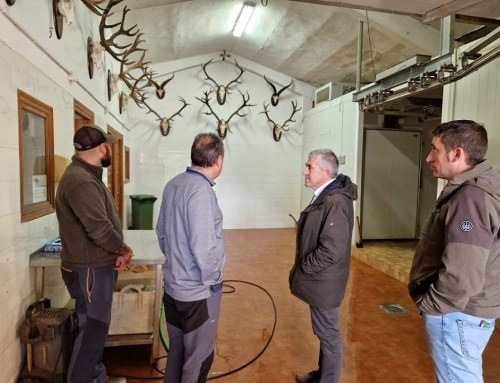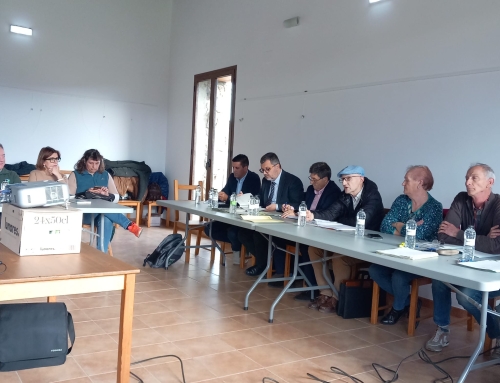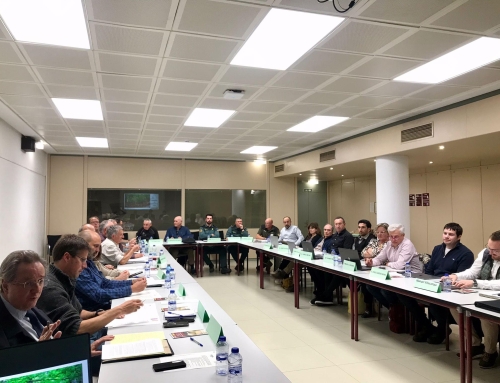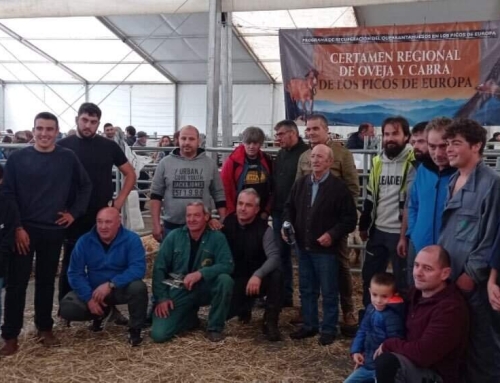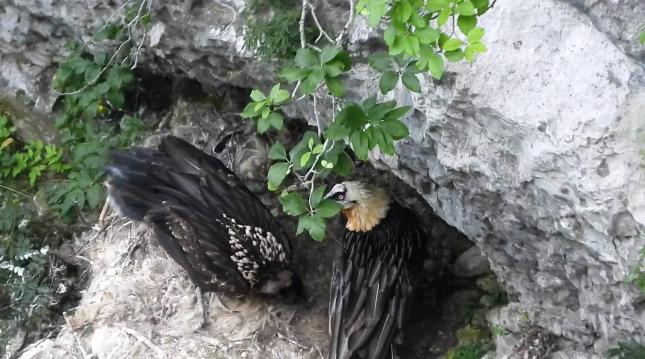
Kiriku and Muel, two lucky lammergeyers.
They colonized Aralar last decade and for years have been trying with another specimen to successfully lay a clutch.
Their dream has come true. This week, the Environmental Guard has announced the first flight of a bearded vulture chick in the Aralar mountain range. But behind this good news there is a story of struggle and tenacity that fills with hope not only this massif, but an entire species.
And it has names.
In the past decade, several specimens of bearded vultures (G
ypaetus barbatus), a bird in danger of extinction and whose diet is based on the bones of other animals, began to make incursions into Urbasa and Aralar from the Pyrenees, where the species was experiencing a miraculous awakening after the presence of a single breeding pair in the Foz de Burgui in the 1980s .Kiriku, a subadult marked in the Navascués-Arbaiun area, where the hermitage of San Quirico is located, which gave it its name, was the first to move to Aralar and become territorialized, back in 2012.
In 2016, an unmarked female stayed with Kiriku and the following year they were joined by Muel, another female marked in Aragon, giving rise to a stable trio in Aralar.
They defended their territory against other raptors and tried to breed.
Already in 2019, their efforts resulted in the first clutch, although incubation was not successful.
Bearded vultures do not have an easy time reproducing; they lay one or, at most, two eggs.
And if the chicks hatch, they face too many dangers, such as the often fatal fall of their own nests.
On the other hand, their longevity allows them to take their time.
And that’s what the cooperative trio from Aralar did: they never gave up trying. But the following year, in 2020, Kiriku, Muel and company were not lucky either, although not far away, in the Pyrenean and pre-Pyrenean area of Navarra, four new chicks managed to leave the nest. In 2022, a chick brought joy to Aralar, but died of an infection before leaving the nest.
Finally, in the spring of 2024, a chick has made it to the Aralar nest and in July made its first flight.
If it survives, it will spend a few months with its parents and then begin a period of dispersal in which it will travel much of the Pyrenees and other mountain massifs. It will take between 5 and seven years until it reaches sexual maturity, at which time it will look for a territory of its own, possibly near Aralar, where it will settle and be able to continue the expansion of the species towards the west.
Source: https://www.diariodenavarra.es/noticias/navarra/2024/08/16/kiriku-muel-dos-quebrantahuesos-afortunados-618719-300.html

